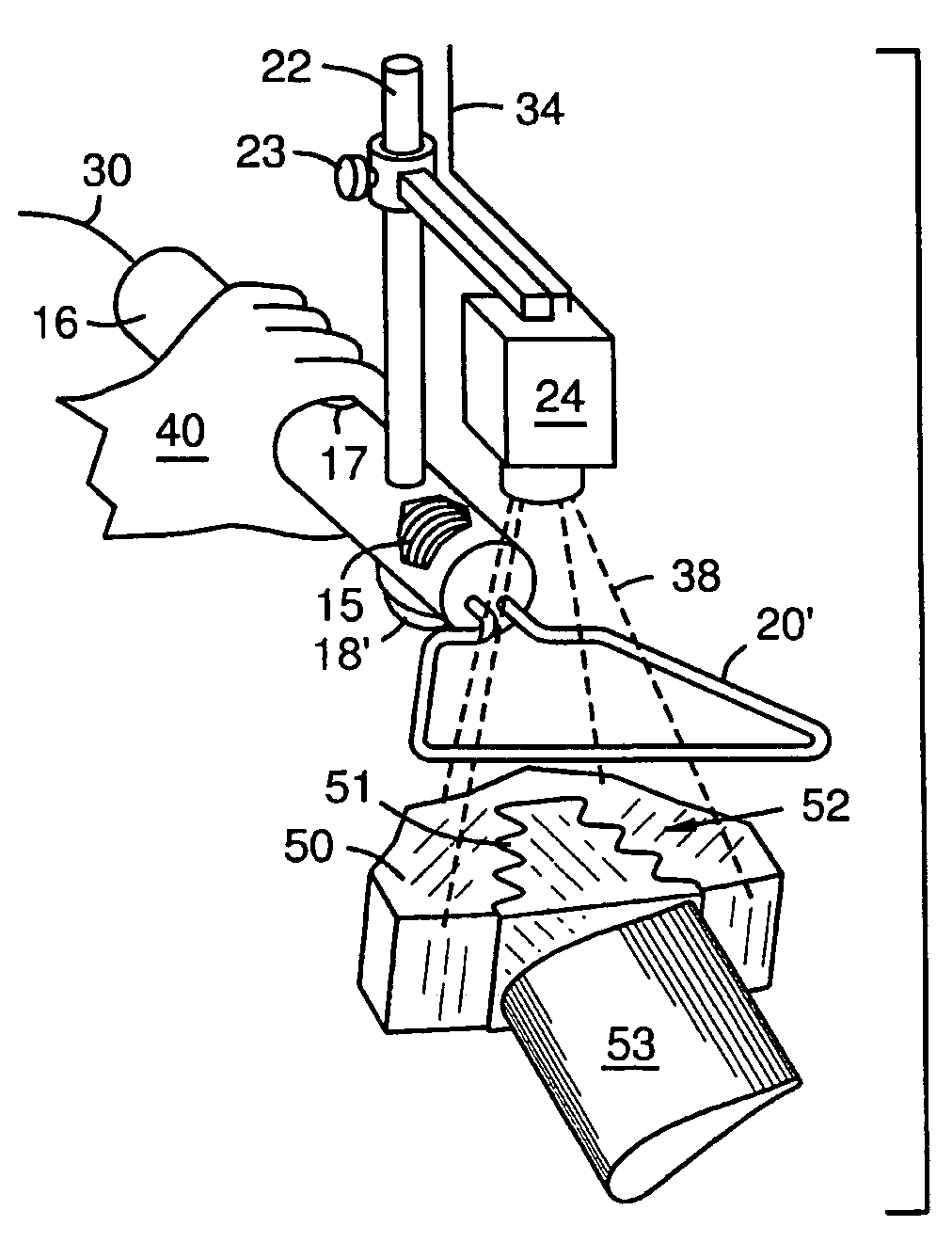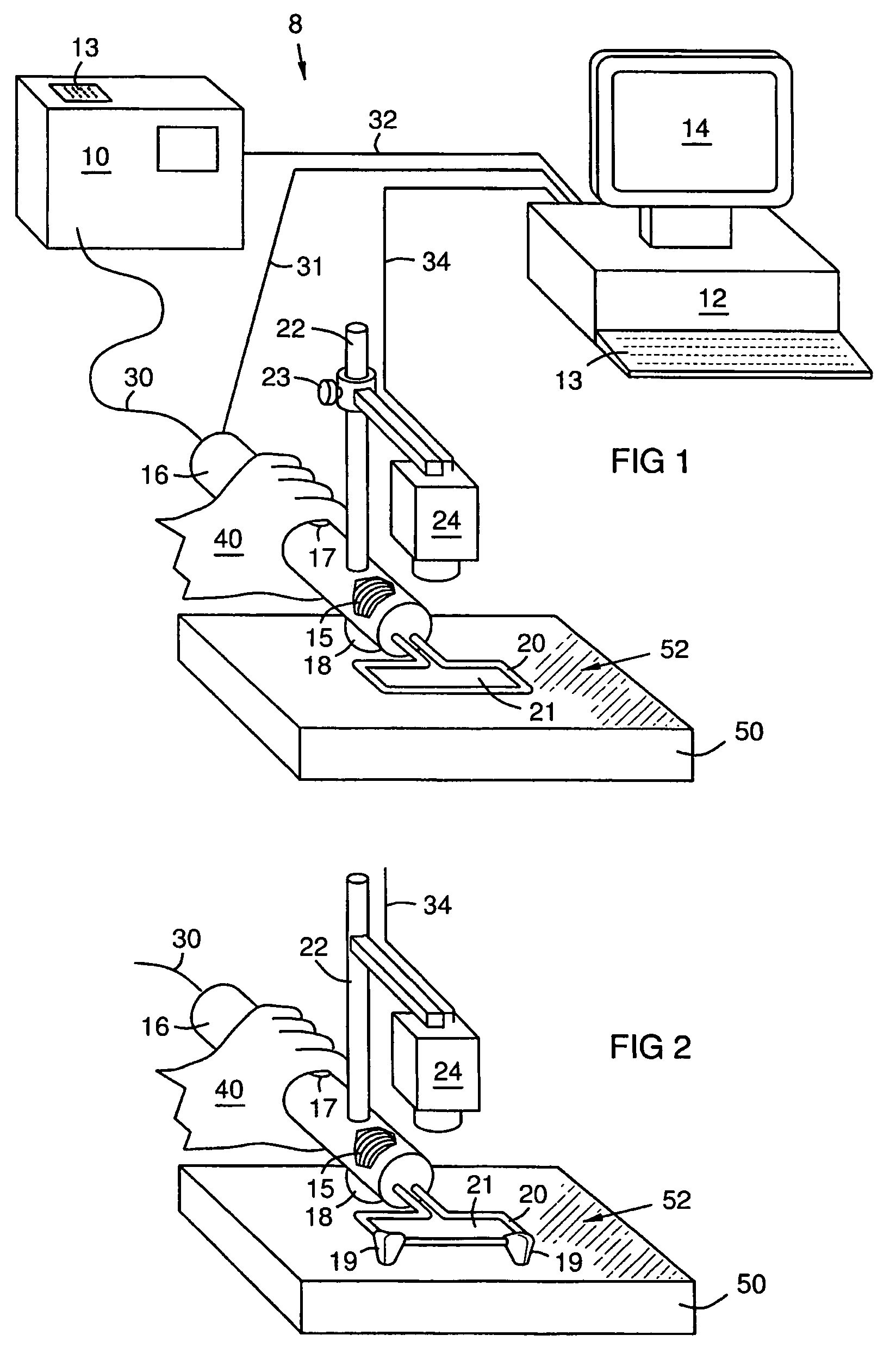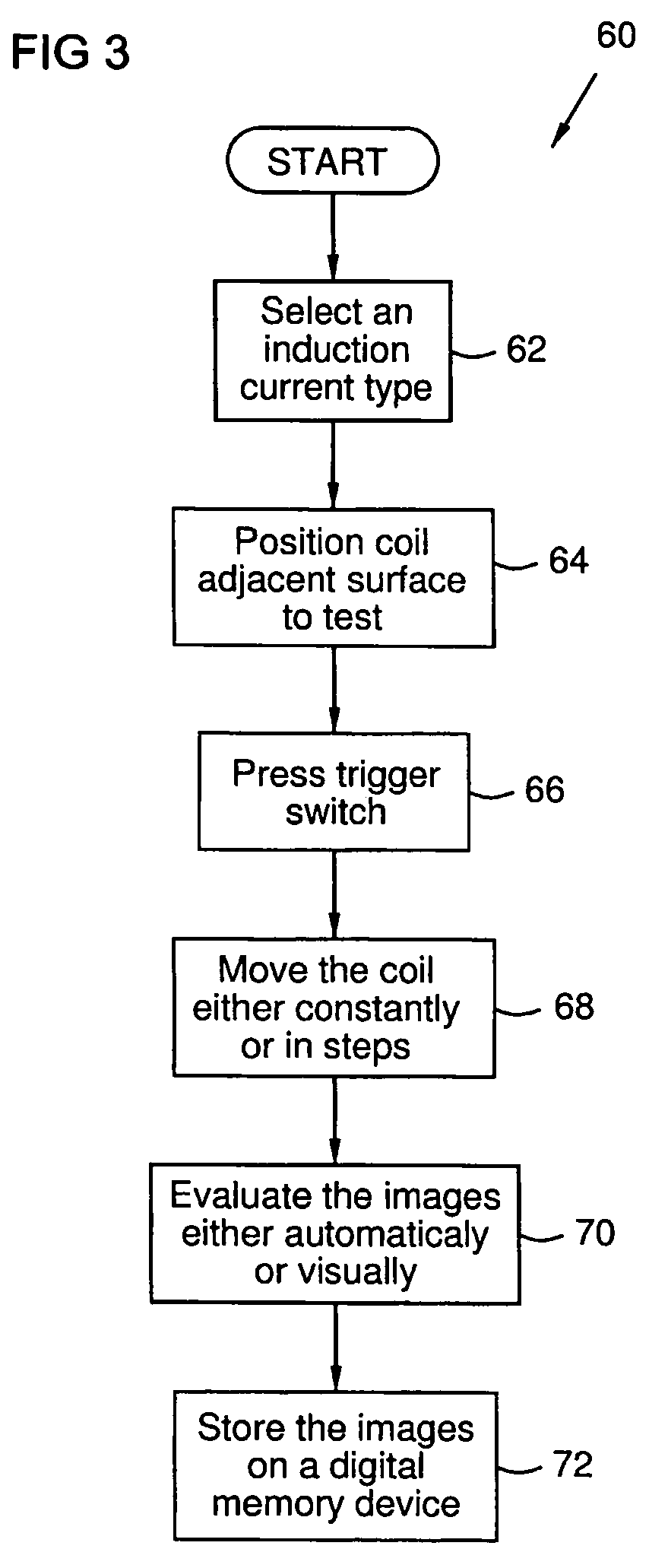Hand held magnetic induction thermography system
a magnetic induction and thermography technology, applied in the field of non-destructive evaluation of articles of manufacture, can solve the problems of unfavorable speed, flexibility, and/or potential contamination of articles tested, and the structural features and flaws of objects that generate localized heat under such stimulation, and achieve the effects of reducing the risk of eddy current contamination, speed and flexibility
- Summary
- Abstract
- Description
- Claims
- Application Information
AI Technical Summary
Benefits of technology
Problems solved by technology
Method used
Image
Examples
Embodiment Construction
[0010]FIG. 1 illustrates a thermography system 8 with an electric current generator 10 electrically connected 32 to a processor or controller 12 with a display 14. The connection 32 provides control and status signals between the controller and the generator 10. The generator 10 provides pulsed alternating current (10 ms-1,000 ms bursts) to a transformer 15 in a handle 16 via an electrical cord 30. A digital infrared camera 24 may be mounted on the handle 16 on a support 22 and may be electrically connected 34 to the controller 12. The camera support 22 may have a camera position adjustment mechanism 23. An induction coil 20 extends from the transformer 15, and may have a generally planar frame shape. The induced current is highest directly underneath the coil winding and decreases with increasing lateral distance from the winding. Therefore, an inner and outer border area with a width defined by the distance from the winding where the current decays to a certain extent (for example...
PUM
 Login to View More
Login to View More Abstract
Description
Claims
Application Information
 Login to View More
Login to View More - R&D
- Intellectual Property
- Life Sciences
- Materials
- Tech Scout
- Unparalleled Data Quality
- Higher Quality Content
- 60% Fewer Hallucinations
Browse by: Latest US Patents, China's latest patents, Technical Efficacy Thesaurus, Application Domain, Technology Topic, Popular Technical Reports.
© 2025 PatSnap. All rights reserved.Legal|Privacy policy|Modern Slavery Act Transparency Statement|Sitemap|About US| Contact US: help@patsnap.com



